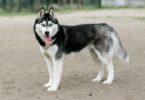What if your ideal companion could guard livestock, track game, and snuggle on the couch? This versatile breed has been doing exactly that since the days of American pioneers like Daniel Boone. Discover why these rugged yet affectionate dogs remain a top choice for active households.
Originally bred in Southern Appalachia, these medium-sized working animals thrive in roles ranging from hunting partners to family guardians. Their short coats come in brindle, black, or yellow shades, requiring minimal grooming but offering maximum durability for outdoor adventures.
This guide explores their unique blend of intelligence and loyalty. You’ll learn how their athletic build—standing 16-26 inches tall—supports their high-energy lifestyle. Proper care includes protein-rich diets and activities that challenge both body and mind.
New owners should prepare for consistent training to channel their strong instincts productively. While generally healthy, routine vet checkups help maintain their robust nature. Ready to unlock the secrets of raising a happy, well-adjusted companion?
The Legacy and History of Mountain Cur Puppies
In the rugged Appalachians, settlers developed a multipurpose dog crucial for homestead security and hunting. Frontiersmen like Daniel Boone relied on these sturdy companions to track game, guard properties, and protect families from predators. Their bravery in confronting bears and other wildlife made them indispensable to pioneer life.
Early European immigrants bred Mountain Curs for endurance in harsh terrains. These dogs thrived during long expeditions, showcasing unmatched loyalty to their owners. By 1957, dedicated breeders formed the Original Mountain Cur Breeders Association to preserve their lineage.
The breed’s versatility extended beyond hunting. Families valued them as protectors of children and livestock, cementing their role in frontier households. Today, their legacy lives on through owners who appreciate both their working spirit and affectionate nature.
Distinctive Traits and Characteristics
From weather-resistant coats to tireless energy, every feature of Mountain Cur dogs serves a purpose. These medium-sized canines stand 16-26 inches tall and weigh 30-60 pounds, with muscular frames built for endurance. Their short double coat requires little grooming yet withstands rough terrain and harsh climates.
The breed’s coat showcases a striking variety of colors, including black, red, and yellow. Brindle patterns remain iconic, often mixed with white markings on the chest or paws. This rugged appearance matches their adaptable nature in both wooded areas and family homes.
Mountain Curs combine sharp intelligence with unwavering loyalty. They thrive when given tasks that engage their problem-solving skills, from scent tracking to obstacle courses. This drive stems from generations of guarding livestock and hunting game alongside frontier families.
Their balanced temperament makes them excellent companions for active families seeking both protector and playmate. Regular mental challenges paired with physical exercise prevent boredom, channeling their natural instincts productively. It’s this blend of brains and bravery that solidified the cur’s reputation as America’s original working dog.
Comprehensive Care Tips for Mountain Cur Puppies
Keeping these energetic pups happy starts with understanding their needs. Aim for 60–90 minutes of daily activity—split between brisk walks, fetch games, and puzzle toys. Structured playtime prevents boredom and supports joint health while reinforcing obedience skills.
Create a secure home environment with a fenced yard for safe exploration. These dogs thrive in spaces where they can sprint freely. For apartment dwellers, commit to multiple outdoor adventures each day to meet their exercise demands.
Weekly brushing removes loose fur and distributes natural oils. Bathe monthly using a vet-recommended shampoo to avoid skin irritation. Floppy ears require weekly checks—gently wipe with a damp cloth to prevent moisture buildup and infections.
Consistency is key. A predictable day with set meal times, training sessions, and play periods helps channel their intelligence positively. Pair physical challenges with scent games or agility drills to engage their working instincts.
Regular vet visits safeguard long-term health. Discuss vaccination schedules and parasite prevention during checkups. Early detection of issues like ear infections ensures quick treatment, letting your companion stay active and comfortable.
Feeding and Nutritional Needs
Fueling your Mountain Cur’s adventures starts with smart nutrition choices. Active breeds thrive on high-quality commercial dog food meeting AAFCO standards. Look for formulas rich in animal protein (30%+) to support muscle development and energy demands.
Puppies need three to four meals daily for steady growth. Transition to two portions around 12 months old. Adult dogs typically require 2–3 cups daily, split into morning and evening feedings. Adjust portions based on activity levels—hunting seasons may demand 20% more calories.
Incorporate glucosamine supplements early to protect joints during high-impact activities. Always provide fresh water, especially after exercise. Vets recommend annual dietary reviews to adapt to changing needs as dogs age.
A balanced diet strengthens immunity and sustains energy for family adventures. Consult your vet to personalize plans addressing allergies or weight concerns. Proper nutrition shapes both physical vitality and calm behavior indoors, making mealtime a cornerstone of responsible ownership.
Training, Behavior, and Outdoor Activities
Smart and driven dogs thrive when their natural instincts meet purposeful guidance. Positive reinforcement techniques like clicker training and treat rewards build trust while teaching commands. Short 10-minute sessions with clear cues—”sit,” “heel,” “quiet”—keep these quick learners engaged without frustration.
Outdoor adventures mirror their historic roles. Hide scented toys in wooded areas for tracking games, or set up backyard obstacle courses that simulate hunting scenarios. These activities satisfy their need to work while burning energy. Always reward successful finds with praise to reinforce desired behaviors.
Excessive barking often stems from boredom or alert instincts. Redirect this energy by teaching the “speak” and “quiet” commands during play. Early socialization with various sounds and environments helps dogs distinguish real threats from harmless noises.
Rotate training tasks weekly to prevent mental stagnation. Combine scent work with agility drills, or practice recall commands during hikes. Consistent routines that blend physical challenges with problem-solving strengthen the bond between owner and dog while honoring their working heritage.
Final Reflections on Embracing Your Mountain Cur Companion
Embracing a Mountain Cur means welcoming a legacy of resilience into your daily life. These dogs carry centuries of frontier spirit, shaped by pioneers who relied on their courage and versatility. Modern owners inherit this heritage—a loyal partner equally skilled at outdoor challenges and quiet evenings with loved ones.
Proper care transforms their natural drive into household harmony. Consistent training and active routines honor their working roots while fostering trust. A balanced approach meets both physical needs and the breed’s desire for purposeful engagement.
Families gain more than a pet—they connect with living history. From safeguarding homesteads to playing with children, these dogs adapt roles across generations. Their ability to switch between focused tasks and affectionate downtime makes them ideal for dynamic households.
Choosing this breed celebrates America’s pastoral past while investing in a devoted future companion. Whether exploring trails or relaxing at home, Mountain Curs prove that true partnership transcends time. Their story continues with every family that values loyalty, capability, and heart.
FAQ
Are these dogs suitable for first-time pet owners?
Their high energy and strong hunting instincts require consistent training. While loyal and intelligent, they thrive best with owners familiar with working breeds or those committed to structured guidance.
How much daily exercise do they typically need?
At least 60–90 minutes of vigorous activity like hiking, agility drills, or scent games. Without proper outlets, their stamina can lead to destructive behaviors indoors.
What health screenings are recommended for this breed?
Hip evaluations and eye exams are advised. Reputable breeders often test for degenerative myelopathy and cardiac issues, as these occasionally affect the lineage.
Can they coexist with smaller pets like cats?
Early socialization is critical. Their prey drive may trigger chasing, but many adapt well to household cats if introduced during puppyhood under controlled settings.










Leave a Comment